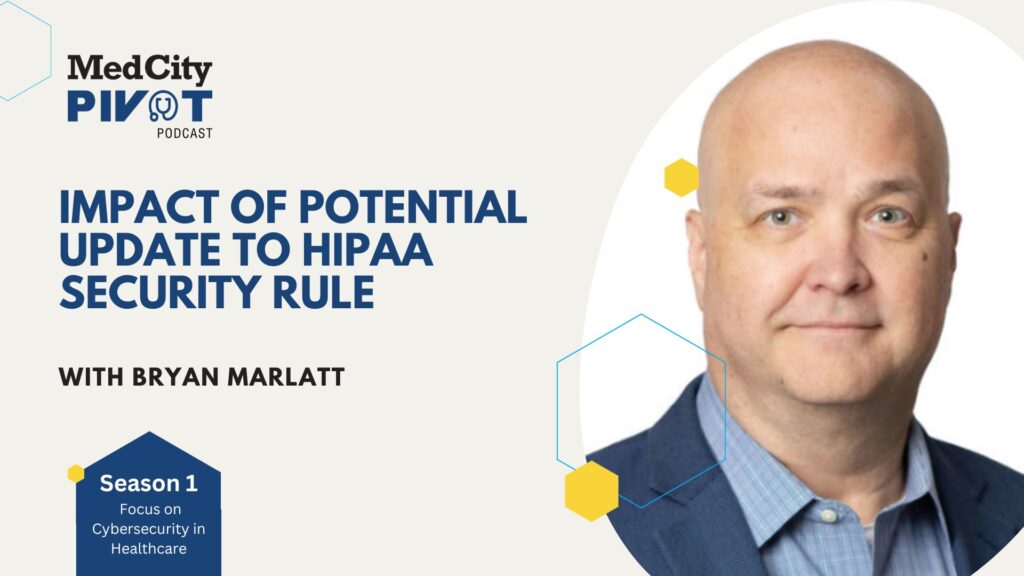5 Important Insights You Likely Missed From This HIMSS25 Expert Panel on AI
Sometimes when you are in the middle of capturing notes from a panel discussion, you don’t realize the true implications of the statements made by the panelists until you review your notes later. That is exactly what happened at HIMSS25. Here are five profound statements I only realized after reading my notes.

Sometimes when you are in the middle of capturing notes from a panel discussion, you don’t realize the true implications of the statements made by the panelists until you review your notes later. That is exactly what happened at HIMSS25. Here are five profound statements I only realized after reading my notes.
The panel in question was “AI Strategy: The Critical Role of Data Integrity & Validity” featuring:
- Dr. Zafar Chaudry, Chief Digital Officer and Chief AI & Information Officer at Seattle Children’s
- Dr. Sonya Makhni, Medical Director at Mayo Clinic Platform
- Ajay Kapare, President & CEO at ELLKAY (moderator)
1. Collaborate With Providers on AI Before the Window Closes
When I first heard this statement, I thought Dr. Makhni was referring to the goodwill and togetherness that brought different parts of the healthcare ecosystem together. But upon further reflection, I now believe that Makhni was giving vendors a warning.
Right now, vendors and providers are trying to figure out how to best use AI. There is a window of opportunity for vendors to work together with providers to figure this out…but that window is expiring quickly. As a vendor, if you aren’t working with your customers through this period, then you are at risk of having to play catch-up to your competitors that discovered effective ways to utilize the technology before you did.
2. AI Needs to Show Macro ROI
When Dr. Chaudry made the above statement about the need for AI to show an ROI, I thought he was looking for AI to demonstrate a tangible result. However, looking at his statement now, I believe he was referring to the need for AI to have an ROI that justifies the collective investment a provider organization must make to deploy AI.
Consider the amount of time and effort required to gather, normalize, and store all the data for an AI engine to utilize. AI, after all, does not work well with dirty data. Consider also the process changes and training that may be necessary to accommodate AI. There is also the legal and engineering effort that may be required to properly vet AI solutions.
The implication? Vendors need to look beyond the micro ROI that their AI provides and should consider the broader costs their customers may need to bear. Just consider what happened in the early days of EHRs, lab systems, and even Imaging Solutions – when you looked at each of them in isolation, they provided tremendous ROI, but when you considered how much effort it took those early adopters can anyone truly say they had a positive ROI in the first few years?
3. Until Data Quality & Integrity are Addressed, the Full Potential of AI Will not be Realized
Again, this looks like a simple statement, but the deeper implication is that until healthcare addresses data quality, the full potential of AI will not be realized. This is a rather sobering thought. For vendors this means that showcasing your solution to a provider organization may be a wasted effort if that organization does not have easy access to accurate, normalized data upon which your AI can apply its algorithm.
It is time for vendors to ask deeper questions in the sales process…or better yet, time to help customers improve data quality.
4. The Days of Customers Doing the Work to Standardize Data May be Ending
I almost missed this statement from Dr. Makhni. It was part of a longer statement about data integrity at Mayo Clinic and how their team was working to ensure the data integrity is of a high standard so that they can better leverage digital technologies.
The implication is that vendors need to be ready to conform to the data integrity standards being established by providers. The days of providers taking on the task of making a vendor’s data usable may be coming to an end. If you don’t invest in making it easy to get your data into the needed format, you may not be chosen.
5. Every User is a Power User
The implication of Dr. Chaudry’s statement is profound. In an era when people who have not been trained in code development can create a web application with a few clicks, the onus is now on vendors to make their solutions usable by more than just power users.
The time is coming when the expectation will be that any user should be able to use a solution’s most advanced features without the need for custom coding or specialized training. That is a high bar, but it wasn’t that long ago when creating a website was only possible for those that knew HTML.
Health IT Companies Need to Act Now
The five insights from this HIMSS25 panel should help vendors refine their AI and data strategies, improve relationships with their customers, and ensure their solutions are ready to meet the demands of the market. The message is clear, the time to act is now—embrace these insights to stay ahead of the curve so that your solutions are not just relevant, but indispensable to healthcare organizations.
Learn more about Seattle Children’s at https://www.seattlechildrens.org/
Learn more about Mayo Clinic Platform at https://www.mayoclinicplatform.org/
Learn more about ELLKAY at https://www.ellkay.com/

















































































































.jpg?#)































